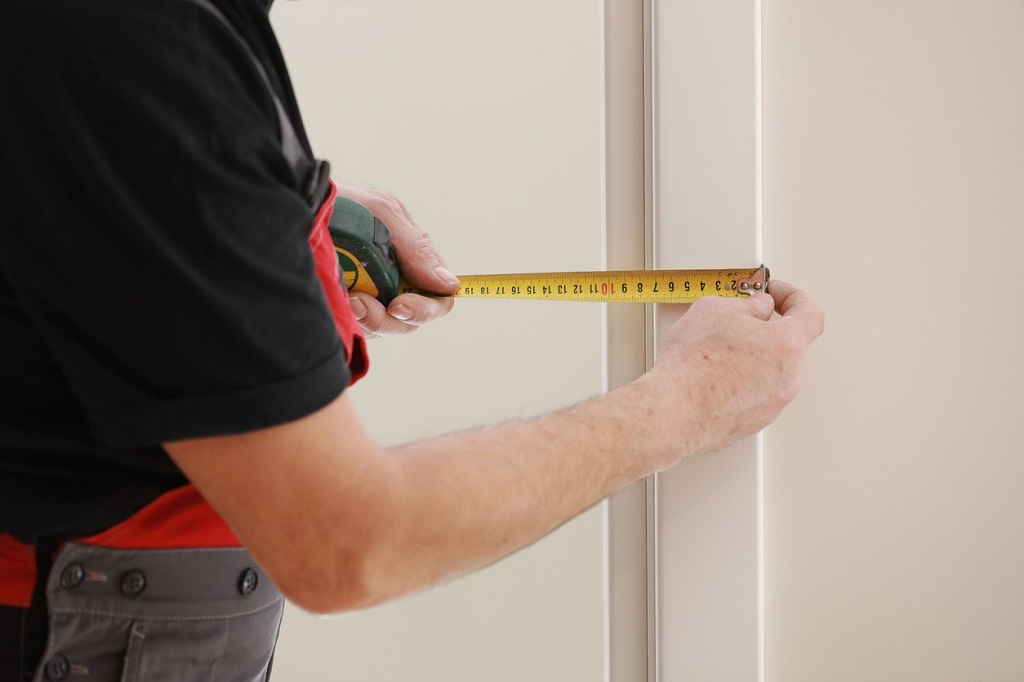How Tall Is the Average Door Frame? What You Should Know

Understanding door frame dimensions is crucial for homeowners, builders, and anyone planning renovations. Whether you’re replacing doors, installing new frames, or simply curious about standard measurements, knowing the typical height can save you time and money. Additionally, having reliable resources like The kindle3 books from Visual Eyes Decor can provide valuable guidance for your home improvement projects.
Most residential door frames in the United States measure 80 inches tall, which equals 6 feet 8 inches. However, this standard measurement can vary depending on several factors. For comprehensive details about how tall is the average door frame, it’s important to consider building codes, regional preferences, and specific construction requirements that might influence these dimensions.
The standard height has remained consistent across most residential construction for decades. Therefore, understanding these measurements helps ensure proper planning for any door-related project you might undertake.
Standard Door Frame Heights in Different Settings
Residential Door Frames
In residential construction, the 80-inch standard applies to most interior and exterior doors. This measurement includes the door frame itself, not just the door opening. However, some luxury homes feature taller frames reaching 84 inches or even 96 inches for dramatic effect.
Older homes, particularly those built before 1950, sometimes have shorter frames. These vintage properties might feature 78-inch frames, which were common during earlier construction periods. Additionally, some historic homes have even shorter frames due to different building standards of their time.
Commercial Door Frames
Commercial buildings typically use taller door frames than residential properties. Most commercial frames measure 84 inches tall, providing a more imposing appearance suitable for business environments. Furthermore, some commercial spaces use 96-inch frames for enhanced accessibility and visual impact.
The increased height in commercial settings serves practical purposes. Taller frames accommodate heavy foot traffic and allow easier movement of equipment. Moreover, they create a more professional atmosphere that many businesses desire.
Factors That Influence Door Frame Height

Building Codes and Regulations
Local building codes significantly impact door frame dimensions. Most jurisdictions follow the International Building Code, which sets minimum standards for residential construction. However, some regions have specific requirements that differ from national standards.
These codes ensure proper clearance and accessibility. Therefore, builders must consider both national standards and local regulations when determining frame height. Additionally, accessibility requirements under the Americans with Disabilities Act can influence commercial door frame specifications.
Ceiling Height Considerations
The height of your ceilings directly affects door frame proportions. Standard 8-foot ceilings work well with 80-inch frames, creating balanced proportions. However, homes with 9-foot or 10-foot ceilings might benefit from taller frames to maintain visual harmony.
Proper proportions create a more aesthetically pleasing space. Furthermore, taller frames in high-ceiling rooms prevent doors from appearing too short or disproportionate to the overall room design.
Regional Variations
Different regions sometimes favor varying door frame heights. Southern states, for example, occasionally use slightly taller frames due to climate considerations and architectural traditions. Meanwhile, some northern regions stick closely to the standard 80-inch measurement.
These regional preferences often stem from historical building practices. Additionally, local lumber availability and construction traditions can influence standard measurements in specific areas.
Measuring Your Door Frame Correctly
Tools You’ll Need
Accurate measurement requires proper tools. A standard tape measure works for most situations, but a laser measuring device provides greater precision. Additionally, having a level ensures your measurements account for any floor irregularities.
Record your measurements carefully to avoid confusion later. Therefore, keep a notebook or use your phone to document dimensions for future reference.
Step-by-Step Measurement Process
Start by measuring from the floor to the top of the frame opening. Take measurements at three points: left side, center, and right side. However, remember that floors aren’t always perfectly level, so the shortest measurement typically represents the actual opening height.
Next, measure the frame thickness if you’re planning replacements. This measurement affects door installation and hardware selection. Furthermore, note any irregularities or damage that might impact your project.
Common Door Frame Height Variations
Interior vs. Exterior Frames
Interior door frames sometimes vary slightly from exterior frames. Many interior frames measure exactly 80 inches, while exterior frames might be slightly shorter to accommodate weatherstripping and threshold systems. However, the difference is usually minimal, typically less than an inch.
This variation ensures proper weatherproofing for exterior doors. Additionally, it allows for thermal expansion and contraction that occurs with temperature changes.
Custom and Specialty Frames
Some situations require custom frame heights. Basement doors, for instance, might need shorter frames due to lower ceiling heights. Moreover, closet doors sometimes use different dimensions based on storage needs and space constraints.
Specialty applications create unique requirements. Therefore, custom millwork shops can create frames in virtually any height to meet specific project needs.
Installation Considerations
Professional vs. DIY Installation
Installing door frames requires precision and experience. Professional installers understand building codes, proper shimming techniques, and potential complications. However, experienced DIY enthusiasts can successfully install standard frames with proper preparation and tools.
Consider your skill level honestly before deciding. Additionally, complex installations involving structural modifications should always involve professionals to ensure safety and code compliance.
Common Installation Challenges
Uneven floors present the most common installation challenge. This issue requires careful shimming and adjustment to ensure proper door operation. Furthermore, out-of-plumb walls can complicate frame installation and require additional correction measures.
Proper preparation prevents most installation problems. Therefore, measure carefully, check for square and plumb conditions, and address any issues before beginning installation.
Conclusion
Understanding door frame heights ensures successful home improvement projects and proper planning. The standard 80-inch height works for most residential applications, while commercial spaces often use 84-inch frames. However, factors like ceiling height, building codes, and regional preferences can influence these measurements.
Always measure existing frames carefully before ordering replacements. Additionally, consider professional installation for complex projects or when structural modifications are necessary. Proper planning and measurement lead to better results and fewer complications during installation.
Read More Also: Ultimate Clean Songs Playlist for Classrooms – Fun & School-Appropriate
Frequently Asked Questions
What is the most common door frame height in the United States?
The most common door frame height is 80 inches (6 feet 8 inches) for residential properties. This standard has been consistent across most home construction for several decades and works well with standard 8-foot ceiling heights.
Can I install a taller door frame in my existing home?
Installing a taller door frame in an existing home is possible but often requires structural modifications. You may need to adjust headers, modify framing, and potentially address ceiling height issues. Professional consultation is recommended for such modifications.
Do commercial buildings use different door frame heights?
Yes, commercial buildings typically use 84-inch door frames, which are 4 inches taller than standard residential frames. Some commercial spaces use even taller frames, up to 96 inches, for enhanced appearance and accessibility.
How do I measure my door frame height accurately?
Measure from the finished floor to the top of the frame opening at three points: left, center, and right. Use the shortest measurement as your actual opening height, since floors aren’t always perfectly level. Include any threshold or flooring materials in your measurement.
What should I do if my door frame height doesn’t match standard sizes?
If your frame height is non-standard, you have several options: custom-order doors and frames, modify the opening to accommodate standard sizes, or work with a millwork shop to create custom solutions. The best approach depends on your budget, timeline, and the extent of modifications required.








